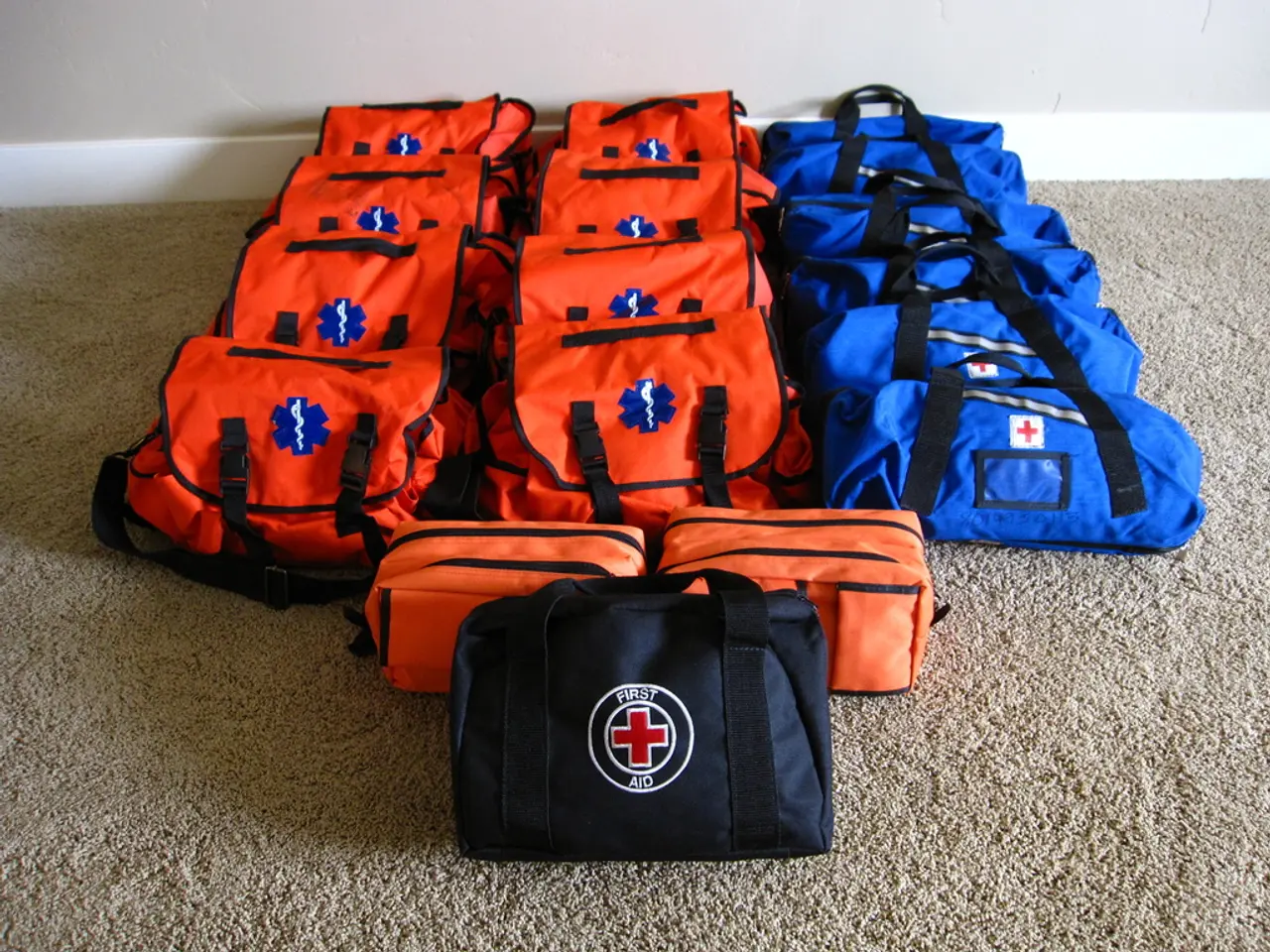First Aid: A Glance at Emergency Care
In Germany, the annual number of deaths due to lightning strikes is regrettably four, while an average of 110 individuals seek medical treatment for injuries sustained from such incidents. These statistics, though sobering, underscore the importance of understanding the risks associated with lightning and the necessary precautions to take in the event of a strike.
Lightning is a natural phenomenon that releases energy exceeding imagination, with several million volts and temperatures reaching up to 30,000 degrees Celsius. This immense power can cause severe injuries, including severe burns, bone fractures, eye injuries, and even blindness.
Prof. Bernd Böttiger, Federal Physician of the German Red Cross (DRK), has provided insights into the effects of lightning strikes. One of the most significant dangers is the disruption of the heart's rhythm, potentially causing cardiac arrest. In such a situation, CPR has more than an 80% chance of success if help is given within the first five minutes.
To minimise the risk of being injured, it is crucial to avoid being the highest point in the area during a storm. Instead, if taking shelter in a building or car is not an option, crouch down, preferably in a depression, with feet close together and only heels touching the ground. This helps to minimise the path of the current. Crouching also reduces the risk of the current jumping to your body if lightning strikes.
If a lightning strike occurs, there is no more current flowing, so you can touch the victim without fearing an electric shock. The procedure for helping a lightning victim is "Check, Call, Compress": Check for response, Call for help (112), and perform chest compressions.
Muscle and nerve contractions can occur in the parts of the body through which the current flows, which may last for hours or days. Furthermore, the blood pressure can increase and remain elevated for several months due to a lightning strike.
In a hut or barn without a lightning rod, the center of the building is the safest spot to crouch down in case of a lightning strike. If it's feasible, drag the lightning victim to a safe building or car, but only if it doesn't delay the start of chest compressions by more than a few seconds.
It is essential to note that while organizations like the VDE record lightning strike data, injury and fatality data are not systematically collected or published as official annual statistics in Germany. This is likely due to decentralized reporting and varying sources of such incidents.
In the case of a storm, lying flat on the ground is not a safe option as the current will flow through your whole body, causing extensive damage. Instead, crouch down and stay safe.
Read also:
- Peptide YY (PYY): Exploring its Role in Appetite Suppression, Intestinal Health, and Cognitive Links
- Toddler Health: Rotavirus Signs, Origins, and Potential Complications
- Digestive issues and heart discomfort: Root causes and associated health conditions
- House Infernos: Deadly Hazards Surpassing the Flames








